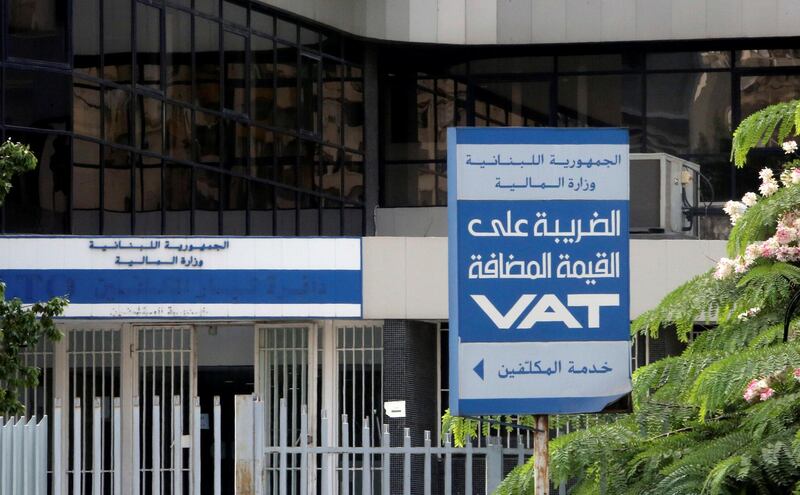The festive period signals change; the rotund white bearded gentleman gifting liberally by request is a joyful distraction from the end year review we should all be engaging in.
This year, executives could do worse than taking a couple of hours out of their holiday and re-watching A Christmas Carol.
Since we all know the structure of the story that Dickens told in staves, let me put a spin on it and hand you, an executive, over to the ghosts of VAT past, present and future.
Stave one
In 2016, the universal business partner, the UAE Government, appeared briefly and announced to you that VAT would launch on the 1st January 2018. The intention was clear. Get ready. Be ready. Otherwise bad things would happen.
Stave two
The ghost of VAT past returns you to a happier place, when time was abundant. There was time to get ready, become compliant. It shows colleagues, advisors and close friends encouraging your entity along this path.
Stave three
Next the ghost of VAT present shows you a business that is ready. With some details still unknown, they are somewhat worried that they might face penalties unless they can quickly adjust their solution.
Stave four
Finally, the ghost of VAT yet to come brings you to your own office, where everyone is stressed, no one more than you. Unsympathetic Tax Inspectors systematically interrogate the business’ processes and records. The final scene is set amid the debris of a closed business. Yours. In returning you to the present, the ghost reminds you that the future is not yet written.
Charles Dickens was no Thomas Hardy, so the story ends in stave five with Scrooge’s happy redemption. Which Victorian author is writing your story?
If you haven’t registered for VAT yet, then you are liable to a Dh20,000 fine. There has been no guidance as to how this is going to be enforced, so I’ll posit the following.
An entity that should be registered for VAT and is not, is technically trading illegally. It cannot levy VAT on invoices to its customers, however, it must account for the amounts that should have been charged.
Consider an entity that invoices Dh500,000 a month. That is Dh25,000 worth of chargeable VAT that their customers will avoid. However, the Federal Tax Authority [FTA] will demand that Dh25,000 be paid to them.
____________
Read more:
VAT in UAE: Experts worry that companies are not ready
VAT in UAE: We explain what will happen on January 1
Parents brace for an increase in the cost of school uniforms
____________
The entity will need to take the initiative, report and pay this money to the FTA. Without a VAT number the entity will be unable to use the FTA submission portal, so an approach will need to be made directly via email. When it comes to penalties, self declaration is always going to deliver a better outcome than being found out.
In the example above the entity faces a Dh25,000 loss in revenue, a Dh20,000 fine for not registering and any other penalty this might be applied. Plus interest. Registration is not so difficult a process and there are businesses that will support you in completing it. If you haven’t started, stop reading and start now.
There are no definitive numbers as to the amount of entities that have not registered, but rumours speak of its total being in six digits. This number is Dh2 billion, minimum, in penalties accruing to the FTA.
As time slips inexorably along, what are the last-minute issues ahead of VAT launching that I commonly get asked about?
Some newer entities and representative companies have had their application to register for VAT declined as their historic reported turnover does not achieve the minimum required. In the former's case they expect to turnover the minimum threshold in the next twelve months, in the latter they have deemed revenues that exceeds it.
Both groups should register again. The first group should include a clearer statement that they intend to turnover at least Dh187,500 in 2018. The other should state how much is being spent in support of a foreign parent’s sales effort, highlighting that the deemed revenues require registration.
We still don’t know what the online VAT submission form looks like. Something banal I expect. The uncertainties of unimportant things can be distracting. As soon as it gets released, I’m confident the nation's media will promptly share it. There are important matters to focus on, the layout of this form isn’t one of them.
The mist has cleared on the time of VAT’s launch. Yes, there is more than one. If you are a 24-hour trading operation, say a hotel or e-commmerce retailer, it is 12.01am. If you are a conventional trading business or a traditional retailer operating into the small hours of 2018, it is 7am.
By far the most common question is about what isn’t known. The Executive Regulations should have been a comprehensive document detailing the intricacies of the operation of VAT. The drafts came in at 53 pages. The final version 54. This was more a pamphlet than the opus that was expected.
To put this in perspective, the rules for an approved tax accounting software system was not included. This appeared at a later date and was 63 pages long. Splitting rules into digestive chunks is admirable, but there was no indication that this was going to be the approach, or a list of what is still to come.
When I speak at conferences I always conclude with the following: industries need to organise themselves, identify the gaps in VAT legislation, formulate solutions taking the best international approach and present it in legal form to the FTA, in partnership, for consideration. That’s my tax wish for 2018.
This season is a magical time. That said, spirits don’t exist. VAT will - and in just days from now.





